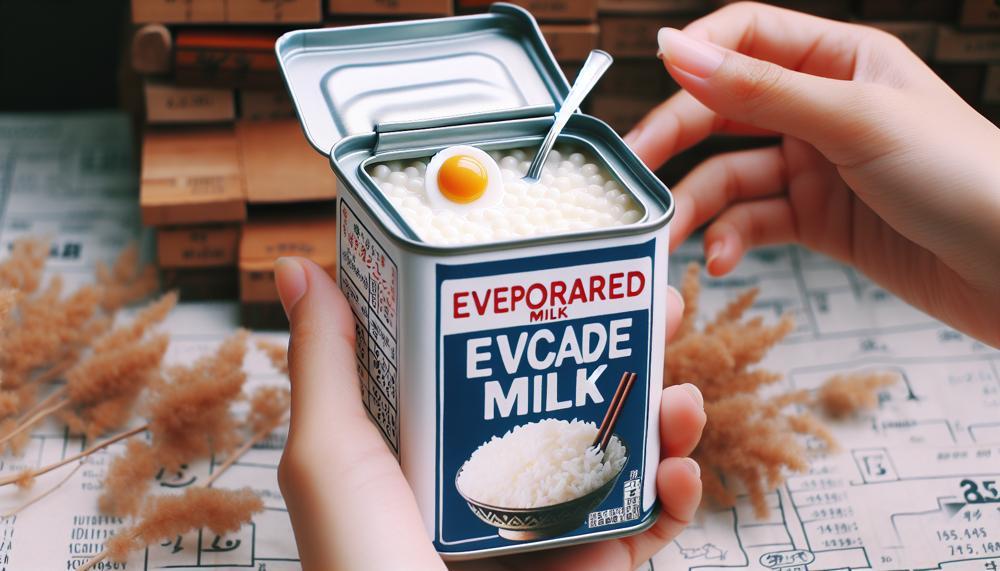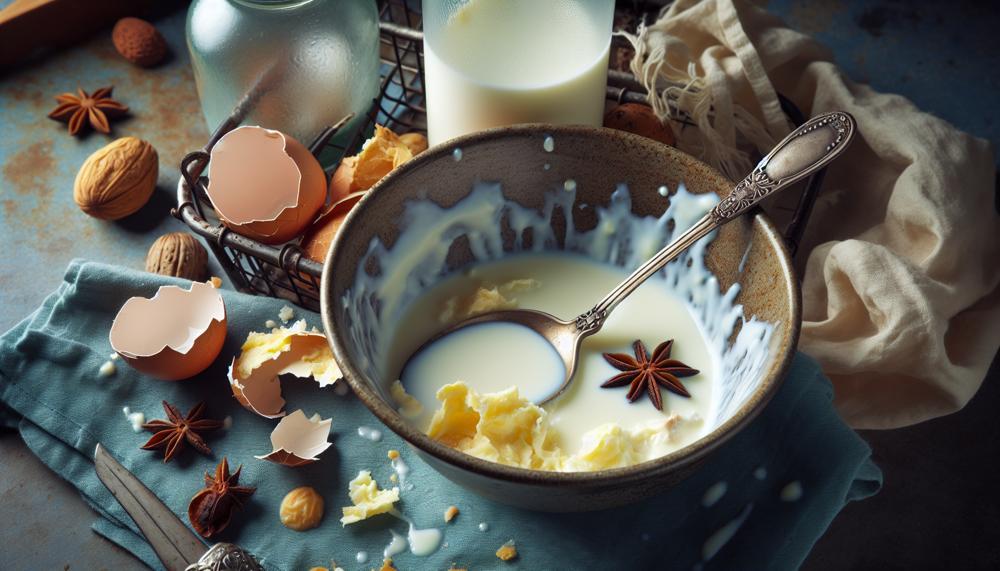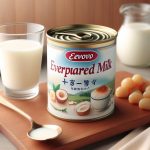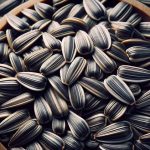Have you ever found yourself with a half-used can of evaporated milk sitting in your fridge, wondering what to do with it?
Don’t let it go to waste. With just a few simple tricks, you can easily store and use leftover evaporated milk for future recipes.
In this blog post, we’ll explore the best methods for keeping your evaporated milk fresh, as well as creative ways to incorporate it into both sweet and savory dishes. We’ll also share time-saving hacks and money-saving tips for making the most of every last drop.
So, don’t let that sit unused any longer; let’s dive in and discover all the possibilities.
Contents
How Long Can You Keep Evaporated Milk?
If you love to cook, chances are you have a can or two of evaporated milk in your pantry. This ingredient is a staple in many recipes, both sweet and savory, thanks to its thick and concentrated consistency. But, like all food items, evaporated milk has a shelf life and can go bad if not stored properly. So, how long can you keep evaporated milk before it spoils?
The process of creating evaporated milk involves heating regular milk to remove about 60% of its water content, resulting in a condensed product with a longer shelf life. Unopened cans of evaporated milk have an indefinite shelf life due to this sterilization process. However, once opened, its shelf life varies depending on where it is stored. It is important to check the best-before date on the can to avoid any potential food poisoning.
When stored in the fridge, unopened evaporated milk can last up to a year. However, once opened, it should be used within five days if stored properly in an airtight container near the back of the fridge. To ensure that your evaporated milk is fresh, use your senses—check for mold, lumps, discoloration, and smell/taste for freshness.

| Storage Method | Unopened | Opened |
| Pantry | Indefinite | 5-7 days |
| Fridge (main compartment) | Up to 1 year | 5 days |
| Fridge (back of fridge) | Up to 1 year | Up to 7 days |
| Freezer (in ice cube form) | Up to 6 months | N/A |
To extend the shelf life of evaporated milk, you can either transfer it to an airtight container or freeze it. However, freezing can alter its consistency, so it is not recommended. Instead, make ice cubes with the leftover evaporated milk and use them for longer storage. When thawing frozen evaporated milk, allow it to thaw overnight in the fridge and blend before using.
Substitutions
Yes, it is possible to use evaporated milk as a replacement for regular milk in cooking. The recommended ratio for substitution is 1:1, meaning that equal amounts of water should be added to reconstitute the evaporated milk. For example, if a recipe calls for 1 cup of regular milk, you would use 1/2 cup of evaporated milk and 1/2 cup of water.
However, it is important to keep in mind that evaporated milk may have a slightly different taste and consistency compared to regular milk. This can affect the overall flavor and texture of the dish. Nevertheless, it is a suitable substitute in most recipes and can be used in both sweet and savory dishes.
If you find it difficult to measure exact ratios, it is recommended to use easier-to-measure amounts of evaporated milk and water. For instance, if you need exactly 3/4 cup of milk, it would be easier to use 3/8 cup each of evaporated milk and water instead of measuring out 3/8 cup of each.
Here is a table showing the proper ratio for substitution based on common measurements:
| Regular Milk | Evaporated Milk | Water |
| 1/4 cup | 2 tablespoons | 2 tablespoons |
| 1/3 cup | 2 tablespoons + 2 teaspoons | 2 tablespoons + 2 teaspoons |
| 1/2 cup | 1/4 cup | 1/4 cup |
| 2/3 cup | 5 tablespoons + 1 teaspoon | 5 tablespoons + 1 teaspoon |
| 3/4 cup | 6 tablespoons | 6 tablespoons |
| 1 cup | 1/2 cup | 1/2 cup |
| 2 cups | 1 cup | 1 cup |
| 4 cups | 2 cups | 2 cups |
It is important to keep in mind that using evaporated milk as a substitute for regular milk may result in a slightly different taste and texture for the dish. However, it is still a suitable option for those who have dietary restrictions or do not have regular milk on hand.
Savory Recipes

If you have some extra evaporated milk on hand, here are some delicious ideas for incorporating it into your cooking.
| Dish | Ingredients | Instructions |
| Rice Pudding | 1 cup cooked rice, 1 cup evaporated milk, 1/3 cup sugar, 1 tsp vanilla extract, 1/4 tsp ground cinnamon | Combine all ingredients in a saucepan and bring to a boil. Let it simmer for 20 minutes until thick and creamy. Serve it warm or chilled. |
| Pasta with White Sauce | 8 oz cooked pasta, 1 cup evaporated milk, 2 tbsp butter, 2 tbsp flour, 1/2 cup grated Parmesan cheese, salt and pepper to taste | In a saucepan, melt butter and add flour to create a roux. Slowly whisk in the evaporated milk until smooth. Add Parmesan cheese, salt, and pepper, and continue stirring until thickened. Toss with cooked pasta. |
| Pound Cake | 1/2 cup unsalted butter, 3/4 cup sugar, 2 eggs, 1 tsp vanilla extract, 1/2 cup evaporated milk, 1 1/2 cups flour, 1 tsp baking powder | In a mixing bowl, cream butter and sugar. Add eggs one at a time, then mix in vanilla extract. Stir in flour and baking powder alternately with evaporated milk until well combined. Pour the batter into a greased loaf pan and bake at 350°F for 45 minutes to an hour. |
| Chicken Noodle Soup | 1 cup chopped cooked chicken, 4 cups chicken broth, 1 cup chopped vegetables, 1 cup cooked egg noodles, 1/2 cup evaporated milk, salt and pepper to taste | In a large pot, bring chicken broth to a boil. Add in the chicken and vegetables, and simmer until cooked. Stir in cooked egg noodles and evaporated milk. Season with salt and pepper. |
| Creamy Ham and Pea Noodles | 8 oz cooked egg noodles, 1 cup chopped ham, 1/2 cup frozen peas, 1/2 cup evaporated milk, 2 tbsp butter, salt and pepper to taste | In a pan, melt the butter and add the ham and peas. Cook until heated through. Stir in evaporated milk and cooked noodles. |
Sweet Recipes
Evaporated milk is a common ingredient that often goes to waste in many households. However, with some creativity and resourcefulness, there are a plethora of delicious sweet recipes that can be made using this versatile dairy product. Here are some suggestions to help you make the most of your leftover evaporated milk:
Homemade Ice Cream
Who doesn’t love a creamy scoop of ice cream on a hot summer day? With some leftover evaporated milk and simple ingredients, you can easily whip up a delicious batch of homemade ice cream. Just mix together the evaporated milk, sugar, vanilla extract, and your desired flavorings (like chocolate chips or fruit puree) and freeze it in an airtight container.
Rich and Creamy Pie Fillings
Evaporated milk is also perfect for creating luscious and creamy pie fillings. From classic pumpkin pie to decadent chocolate cream pie, adding evaporated milk to your filling will give it a smooth and velvety texture. Additionally, it helps the pie set properly without becoming too watery.
Moist and Tender Scones
Scones are a popular treat for breakfast or afternoon tea. Adding leftover evaporated milk to the dough will make them extra tender and moist. You can also use evaporated milk as a glaze for the scones for an added touch of sweetness.
Healthier Smoothies
For a healthier sweet treat, try incorporating some leftover evaporated milk into your favorite smoothie recipe. Not only will it provide a creamy texture, but it also adds extra protein and calcium.
Versatile Drink Option
Evaporated milk can be used in various hot and cold drinks as well. Add it to your morning coffee for a rich and creamy latte, or mix it with hot chocolate for an indulgent treat on a cold day.
Leftover evaporated milk is an adaptable ingredient that can elevate the richness and creaminess of sweet recipes. So, next time you have some in your fridge, try one of these creative and delicious ideas to avoid wasting this valuable ingredient.
What If I Have Coconut-Flavored Evaporated Milk?
You can absolutely preserve the remaining coconut-flavored condensed milk in the same fashion as plain condensed milk. Both variations of condensed milk contain similar ingredients and can be stored using the same techniques. However, it is crucial to take into account its limited shelf life, appropriate storage techniques, and indications of spoilage to guarantee its safety and excellence.
It is easy to assume that all types of condensed milk can be stored in the same way. However, this is not always the case. While both regular and coconut-flavored condensed milk have similar compositions, they can differ in terms of storage requirements. While it may seem convenient to leave them on your countertop, it is important to note that both types of condensed milk have a short shelf life and should be stored properly to maintain their quality and safety.
When storing leftover coconut-flavored condensed milk, it is recommended to keep it in an airtight container in the refrigerator. This will help prevent contamination and prolong its shelf life.
Additionally, make sure to check for any signs of spoilage before using it in any recipes. If you notice any unusual odors or textures, it is best to discard the condensed milk.
Reconstituting Evaporated Milk
After you have opened the can, the left-over evaporated milk should be stored in a container with an airtight seal and placed in the refrigerator immediately. It is recommended to keep it on the middle or top shelf of your fridge, ensuring that the temperature remains between 32°F and 40°F (0°C and 4°C).
To keep track of storage time, label the container with the date and make sure to consume it within five days. For extended storage, you can freeze it in either an airtight container or an ice cube tray.
When you need to thaw it, do so in the refrigerator or using cold water. Always avoid using hot water as it can cause curdling.
To ensure that your leftover evaporated milk stays fresh and safe to consume, here are some tips to keep in mind.
- Firstly, make sure to use a container with an airtight seal to prevent any air from getting in. This will keep your milk from spoiling or absorbing any odors from other foods in your fridge.
- Secondly, storing it on the middle or top shelf of your refrigerator is ideal as these areas have a more consistent temperature compared to the door or bottom shelf.
- Thirdly, do not forget to label the container with the date you stored it, so you know when it needs to be consumed by.
- And lastly, for longer storage, freezing is a great option; just remember to thaw it properly before using.
Now, if you are wondering what to do with leftover evaporated milk, here are some great ideas.
You can use it as a substitute for regular milk in your coffee or tea for a creamier taste. You can also add it to your smoothies for a rich and creamy texture.
It is also great for making creamy soups and sauces or even baking delicious desserts like flan or custard. The possibilities are endless.
How to Tell If Evaporated Milk Has Gone Bad
Properly stored, evaporated milk can last for a considerable amount of time, but like any other food, it is prone to spoilage.
To determine if your evaporated milk has gone bad, here are some key signs to keep an eye out for:
Foul smell
The initial indication of spoilage is a pungent or unpleasant odor. If your evaporated milk smells off, it is best to discard it immediately.
Changes in appearance or texture
Spoiled evaporated milk may appear clumpy or curdled and have an unusual texture. It should have a smooth, creamy consistency.
Formation of layers
If you notice a layer on top of the liquid, this could be a sign of spoilage. This can occur due to the separation of milk solids from the liquid.
Damaged packaging
A damaged, dented or bulging can is also a red flag. In this case, do not consume the evaporated milk, as it may have been contaminated during processing or storage.
Left at room temperature for too long
Evaporated milk should not be left at room temperature for more than 2 hours. Bacteria can multiply rapidly in warm temperatures and cause food poisoning.
If you detect any of these signs, it is best to discard the evaporated milk for safety reasons. It is crucial to note that although evaporated milk has a longer shelf life than regular milk, it can still spoil if not stored properly or used within a reasonable time frame.
To ensure freshness and safety, always store your evaporated milk in a cool, dry place and refrigerate it after opening. If there are leftovers, transfer them to an airtight container or freeze them for later use.
Proper storage and hygiene practices are essential in preventing spoilage and ensuring the best quality taste when using evaporated milk in your recipes.
In conclusion, keeping an eye out for these signs and practicing proper storage and hygiene measures will help you determine if your evaporated milk has gone bad. As the saying goes, “when in doubt, throw it out.”
What to Do with Leftover Evaporated Milk
When it comes to leftover evaporated milk, there are plenty of creative ways to use it in both sweet and savory recipes. Here are some ideas to make the most out of your remaining evaporated milk:
- Start your day off right by adding a splash of leftover evaporated milk to your morning coffee or tea for an extra creamy and indulgent cup.
- Elevate your pasta sauce or salad dressing by incorporating some rich and creamy leftover evaporated milk.
- For a velvety texture and a protein boost, blend leftover evaporated milk into smoothies or shakes.
- Transform it back into regular milk by mixing it with water, making it perfect for any recipe that calls for milk.
- Give soups and sauces a luxurious and creamy consistency by using leftover evaporated milk as a thickening agent.
- Add a unique twist to dishes like Thai curries or rice pudding by using flavored evaporated milk, such as coconut.
- Indulge in sweet treats like fudge, pumpkin pie, Tres Leches cake, scones, and ice cream by incorporating leftover evaporated milk.
- Don’t underestimate the power of even small amounts of leftover evaporated milk – it can add richness to dishes like mac and cheese, mashed potatoes, and pasta sauce.
- Always check for spoilage before using leftover evaporated milk by smelling and tasting it. If it smells sour or tastes off, it’s best to discard it.
- To extend its shelf life, transfer leftover evaporated milk to an airtight container or freeze it.
Conclusion
In conclusion, don’t let that half-used can of evaporated milk go to waste in your fridge. With some simple tricks, you can easily store and use leftover evaporated milk for future recipes. We’ve explored the best methods for keeping your evaporated milk fresh, from time-saving hacks to money-saving tips.
And with our creative ideas for incorporating it into both sweet and savory dishes, you’ll never have to wonder what to do with that extra can again.
Always check the best-before date on the can and use your senses to ensure freshness. Thanks to its sterilization process, evaporated milk has a long shelf life, whether stored in the pantry, fridge, or freezer (in ice cube form).
And when it comes to substitutions in cooking, remember to add equal amounts of water to reconstitute the evaporated milk.
So, next time you have leftover evaporated milk, try out our suggestions for savory recipes like creamy pasta sauces or chicken noodle soup. Or indulge your sweet tooth with homemade ice cream or rich and creamy pie fillings.
The possibilities are endless, so don’t let that sit unused any longer.




